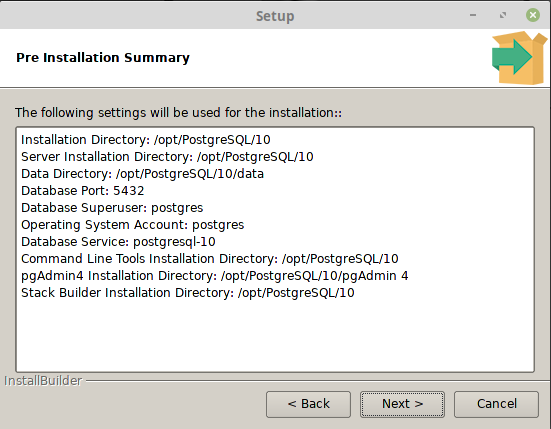

- POSTGRESQL WINDOWS VS MAC HOW TO
- POSTGRESQL WINDOWS VS MAC INSTALL
- POSTGRESQL WINDOWS VS MAC PASSWORD
Public | sbtest2 | table | sbtest | 21 MB | Public | sbtest19 | table | sbtest | 21 MB | Public | sbtest18 | table | sbtest | 21 MB | Public | sbtest17 | table | sbtest | 21 MB | Public | sbtest16 | table | sbtest | 21 MB | Public | sbtest15 | table | sbtest | 21 MB | Public | sbtest14 | table | sbtest | 21 MB | Public | sbtest13 | table | sbtest | 21 MB | Public | sbtest12 | table | sbtest | 21 MB | Public | sbtest11 | table | sbtest | 21 MB | Public | sbtest10 | table | sbtest | 21 MB | Public | sbtest1 | table | sbtest | 21 MB | Schema | Name | Type | Owner | Size | Description Verify the generated tables with the following command: $ psql -U sbtest -h 192.168.55.61 -p 5432 -W -c 'dt+' The data is prepared by a script called parallel_a which available under /usr/share/sysbench/tests/include/oltp_legacy. The schema name is “public” which is the default. The above command generates 100,000 rows per table for 24 tables (sbtest1 to sbtest24) inside database ‘sbtest’. usr/share/sysbench/tests/include/oltp_legacy/parallel_a We can now initialize the database using sysbench with the following command: $ sysbench You should be able to get into the server under sbtest database: $ psql -U sbtest -h 192.168.55.61 -p 5432 -W Verify from psql command line client if the user authentication works correctly: $ psql -U sbtest -h 192.168.55.61 -p 5432 -d sbtest -W Reload the server to apply the changes: $ /usr/pgsql-9.6/bin/pg_ctl -reload Then edit the host-based access file, pg_hba.conf: $ vim /var/lib/pgsql/9.6/data/pg_hba.confĪnd add the following line to allow connections for user sbtest, to database sbtest from all hosts under 192.168.55.0 network: host sbtest sbtest 192.168.55.0/24 md5 > GRANT ALL PRIVILEGES ON DATABASE sbtest TO sbtest
POSTGRESQL WINDOWS VS MAC PASSWORD
> CREATE USER sbtest WITH PASSWORD 'password' If you are familiar with sysbench, it uses the following defaults for PostgreSQL parameters:įirstly, create the database and user inside PostgreSQL: $ su - postgres
POSTGRESQL WINDOWS VS MAC INSTALL
Install the sysbench package: $ yum install sysbench

For Debian/Ubuntu: $ curl -s | sudo bashĪnd for RHEL/CentOS: $ curl -s | sudo bash
POSTGRESQL WINDOWS VS MAC HOW TO
Take note that the path used in this blog post might be different depending on the PostgreSQL version and vendor that you have installed.Īs a side note, we have covered a similar blog post on benchmarking PostgreSQL using pgbench in this blog post, How to Benchmark PostgreSQL Performance. We’ll also use the standard PostgreSQL 9.6 binaries from the PostgreSQL download page. We’ll use the more updated package provided in the official Github page to install sysbench. We will install the latest version of sysbench, currently maintained here. This will also help us generate some activity on the cluster, and check that replication is working as expected. We will make use of a two-node master-slave streaming replication setup by ClusterControl. In this blog post, we’ll show you how to generate test loads using sysbench. Sysbench is a great tool to benchmark PostgreSQL servers. Benchmarking is a way of discovering the performance of your infrastructure.


 0 kommentar(er)
0 kommentar(er)
